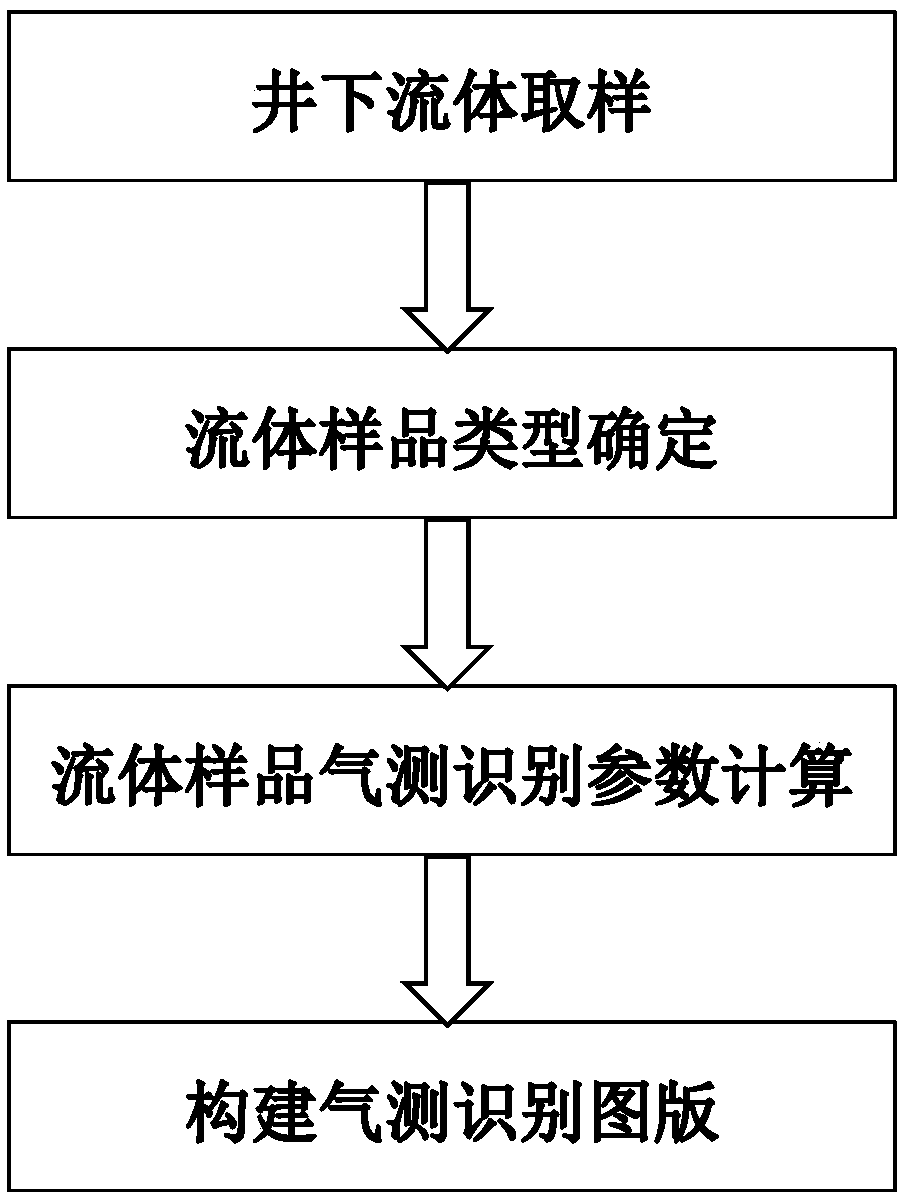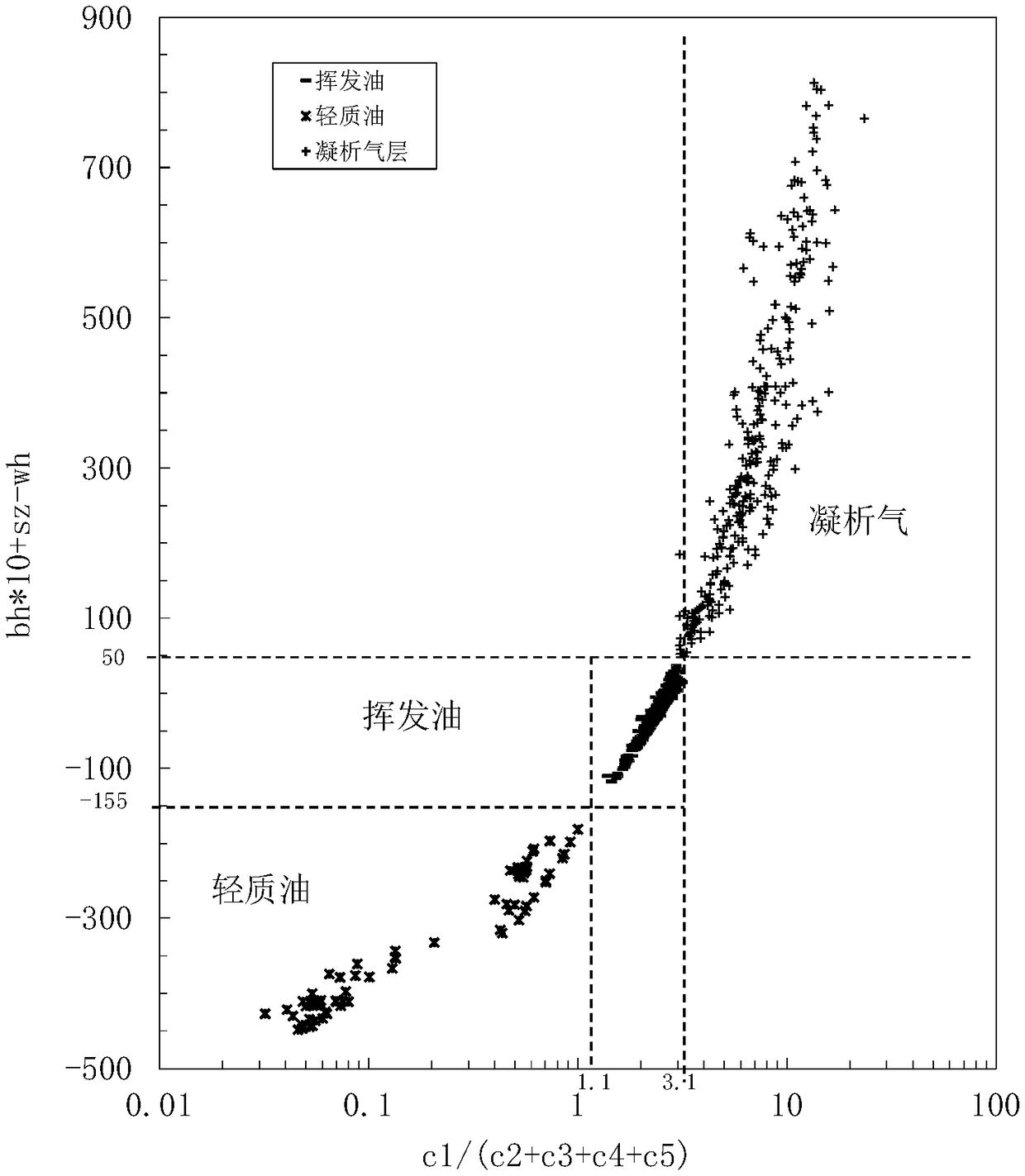Method for identifying the fluid properties of a hydrocarbon reservoir by using gas logging data
A technology of gas logging and fluid properties, which is applied in the field of fluid type determination in oil and gas reservoirs based on gas logging data, can solve problems such as large discrimination errors, poor reservoir physical properties, and weak fluid signal logging response, and achieve strong Adaptability, Accurate Identification, Effect of Improving Accuracy
- Summary
- Abstract
- Description
- Claims
- Application Information
AI Technical Summary
Problems solved by technology
Method used
Image
Examples
example 1
[0031] Such as figure 1 As shown, the method for determining the type of oil and gas layers using gas logging data includes the following steps:
[0032] Step 1, downhole fluid sampling: use exploration well oil and gas layer testing, sampling and production wells to obtain fluid type samples;
[0033] Step 2, determination of fluid sample type: on the basis of high-pressure physical property test analysis, fluid gas reservoir types are classified into condensate gas, volatile oil and light oil according to parameters such as gas-oil ratio, crude oil density, and heavy component content;
[0034] Step 3, obtaining the gas detection identification parameters of the fluid sample: using the gas measurement data of the corresponding depth of the fluid sample to obtain the gas detection identification parameters of oil and gas layers Bh*10+sz-wh, c1 / (c2+c3+c4+c5);
[0035] The calculation formula of described Bh, sz, wh is:
[0036]
[0037]
[0038]
[0039] In the form...
PUM
 Login to View More
Login to View More Abstract
Description
Claims
Application Information
 Login to View More
Login to View More - R&D
- Intellectual Property
- Life Sciences
- Materials
- Tech Scout
- Unparalleled Data Quality
- Higher Quality Content
- 60% Fewer Hallucinations
Browse by: Latest US Patents, China's latest patents, Technical Efficacy Thesaurus, Application Domain, Technology Topic, Popular Technical Reports.
© 2025 PatSnap. All rights reserved.Legal|Privacy policy|Modern Slavery Act Transparency Statement|Sitemap|About US| Contact US: help@patsnap.com



